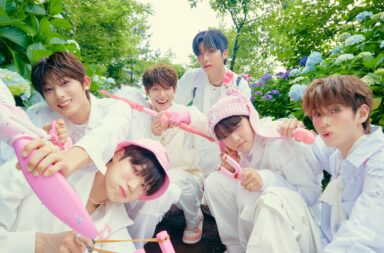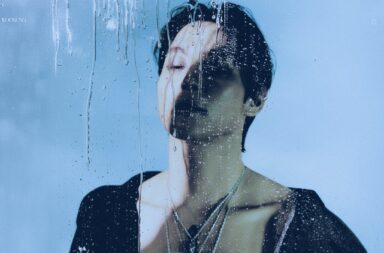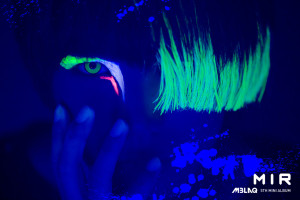 MBLAQ is back with their fifth mini-album, Sexy Beat. Though it is only 5.5 songs, Sexy Beat proves that quality is better than quantity. With so many big names working on the tracks — Primary, Zion T., Simon D., MBLAQ themselves — it’s no surprise that Sexy Beat delivers on multiple levels: it’s cohesive, sophisticated, and each song begs to be listened to carefully, lyrics and all; in fact, if you don’t, its beautiful subtleties might pass you by.
MBLAQ is back with their fifth mini-album, Sexy Beat. Though it is only 5.5 songs, Sexy Beat proves that quality is better than quantity. With so many big names working on the tracks — Primary, Zion T., Simon D., MBLAQ themselves — it’s no surprise that Sexy Beat delivers on multiple levels: it’s cohesive, sophisticated, and each song begs to be listened to carefully, lyrics and all; in fact, if you don’t, its beautiful subtleties might pass you by.
The album opens with its namesake, “Sexy Beat.” While a bit repetitive lyrically, the song does a great job of setting the tone: it’s sensual, smooth and a little dark. Each of the tracks contain one or more of these elements, so the intro song definitely fulfills its duty. What makes this song better is how hot it is. The percussive elements reflect the “beat” part of the lyrics, while MBLAQ’s sultry falsetto and harmonies reflect the “sexy” part. Let it be known that MBLAQ are not liars; this mini certainly brings the sensual tunes.
Next is title song “Smoky Girl.” It is a great choice for their promotional song, because not only is it interestingly composed, but also it captures the entire album. If “Sexy Beat” encompasses the tone, then “Smoky Girl” contains the music. It has electronic dance, funk, a bit of R&B, all of which are heard throughout the other songs. What makes “Smoky Girl” unique, however, is the way it’s composed. It’s a song that must be listened to carefully, which can’t be said of many pop songs. Fully listen to it, and it’s captivating. Put it on in the background, and its brilliance fades.
[youtube https://www.youtube.com/watch?v=dTDmIiGLFEw&w=560&h=315]Its structure is also flat-out confusing for a pop song, since the genre is known for predictability. This might explain the need to actually listen. Let’s break it down: “Smoky Girl” has a bare, 40-second long introduction that sounds like it could be another intro track. Then it busts out the dance beats for 20 seconds. The song doesn’t feel like it officially “starts” until 1:00, when it smushes the vocals and music together. It really picks up in the pre-chorus at 1:43, leading us into the first chorus at 1:59. Then we get a second verse and 15 uninterrupted seconds of Mir rapping, with very little instrumentation underneath to boot. Then it leads into the pre-chorus, chorus, and then stops. No wind down, no climax, no bridge, just finis.
The segmentation is what makes the song stand out. The intro, the music, the song, the rap, the finish. This isn’t a new trend, and most recently we’ve talked about in regards to SM. However, while other songs in this style tend to feel like they’ve been duct-taped together, the segments in “Smoky Girl” blend into each other seamlessly. The sections are not messy, disjoint, or obvious, but subtly break the typical pop pattern.
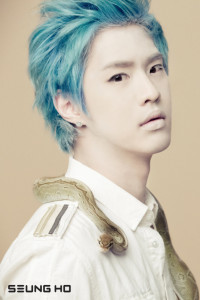 This makes the song more interesting composition-wise, but it’s also a technique to make the listener repeat the song. If a song doesn’t exhibit a familiar pattern, and especially if it ends abruptly without a resolve, a listener will replay it to try and find the pattern and/or resolve. This comes from a marketing standpoint rather than a musical one, but it certainly works for this title single.
This makes the song more interesting composition-wise, but it’s also a technique to make the listener repeat the song. If a song doesn’t exhibit a familiar pattern, and especially if it ends abruptly without a resolve, a listener will replay it to try and find the pattern and/or resolve. This comes from a marketing standpoint rather than a musical one, but it certainly works for this title single.
It’s also worth mentioning that many of the lyrics are repeated to add to the musicality of the song, such as “juice, juice” or “tush, tush,” which is a nice touch to make the lyrics work as part of the music.
While “Smoky Girl” is undoubtedly the most interesting song on the album, “R U OK?” is a worthy following track. It starts off low-key with finger snaps and some vocal improv, then kicks up the funk to be almost — but not quite — upbeat. What’s holding back the full energy? This is one of those rare times where knowing the lyrics really helps to appreciate the whole song:
[youtube http://www.youtube.com/watch?v=WI186KiNvVI&w=560&h=315]The singer is getting over a relationship, but not in the just-broke-up, will-never-live-again kind of way. Things are getting better, but there are little incidents trigger memories and feelings. Suddenly the almost-upbeatness makes sense, showing how well the music reflects the lyrics. Also reflecting these lyrics is the impressive display of emotion in MBLAQ’s vocals. Their voices have an open, flowing quality all around, illustrating the day by day ramblings, while the chorus and rap show more of the inner emotional tension. The music is pretty much the same straight through, and while the beat is a little boring, it’s steady and strong, anchoring those vocals.
Next is the ballad, “Celebrate.” It slows the album down and is very soft vocally. Like “R U OK?” the composition is the same throughout, but “Celebrate” lacks a strong beat. This is understandable considering its a ballad, but combined with the soft singing the song floats by without making an impact. Dragging out “celebrate” in the chorus with breathy voices doesn’t make the hook memorable, and the only part that picks up energy is the electronic vocal line before the second verse, because the music drops out and breaks up the monotonous sound. The rap works the same way, but stretches a tad too long and its harshness feels out of place, making “Celebrate” the most run-of-the-mill song on the album.
[youtube http://www.youtube.com/watch?v=KL6CDZmu1XI&w=560&h=315]“Pretty Girl” is the most upbeat song the album gives us, talking about going out in the sunshine and kissing your love on the cheek. We hear a restrained harmony, evoking the sweetness of the lyrics. Musically, the most noticeable point is the drum beat that subtly works to drive the song. The predominant beat is a regular funky backbeat, which drops in and out at key moments to create the sensation of building the music. It’s not in the song for the first 30 seconds, but you can feel the rhythm. Then the backbeat kicks in, but soon drops to a straight beat. The funk comes back at the pre-chorus, effectively building the music and adding excitement to carry through the chorus. The rhythmic vocal play also contributes to this feeling, switching between smooth vocals and a talk-singing style, and also making the rap the entirety of the second verse. These are great examples of how subtle music details can make a big impact on a relatively simple song.
“Pretty Girl” is a lovely, easy listening break, but I do wish it could have been more bombastic. This is not because the song itself needs it, but rather because the album needs it. At this point, a strong upbeat song would’ve helped to mix up the album. The songs all flow into each other nicely, but if the energy could’ve been kicked up a notch for one song, it would’ve given the album perfect variety.
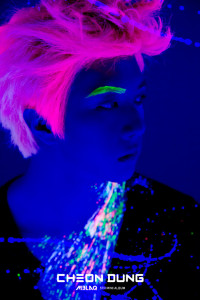 Finally, we have “Dress Up,” which closes the album with another bout of smoldering vocals. It’s one of the more standard tracks, but works as a good jam. It starts off well with bare vocals echoing “Smoky Girl,” and the repeated “show me yourself” line sounds great rhythmically, but then we hear the awkward: “Baby, get your dress up.”
Finally, we have “Dress Up,” which closes the album with another bout of smoldering vocals. It’s one of the more standard tracks, but works as a good jam. It starts off well with bare vocals echoing “Smoky Girl,” and the repeated “show me yourself” line sounds great rhythmically, but then we hear the awkward: “Baby, get your dress up.”
Let’s talk about this line since it is repeated a lot. Upon first listen, it might be confusing, especially since we know how K-pop can twist English around to sound dirty when it doesn’t mean to. This line could be an inappropriate way to say, “Dress up for me,” or it could be an inappropriate way to say, “Take your clothes off.” The lyrics predominantly talk about fashion, and the singer even says he will dress up for the listener, so it’s most likely the former. However, the sexy lyrics heavily suggest where things are going, so it could be interpreted as the latter too. Ingenious double entendre or hilarious mistake? You decide.
Admittedly, the album might not be a home run if you do not like the smooth, sensual sounds of MBLAQ. It’s reminiscent of their earlier works and doesn’t have the drama of releases like “This is War.” The album also lacks a song where MBLAQ can cut loose vocally, but considering the musical strength of almost all the tracks, I’m willing to let that omission slide. 4/5.
Readers, love it or not-so love it? What’s your favorite track?
